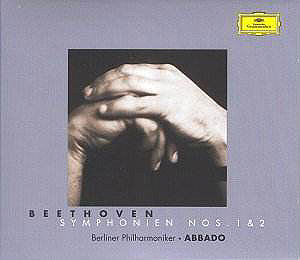 Composer: Arne Nordheim
Composer: Arne Nordheim
Works: Concerto for Violin and Orchestra, Duplex for Violin and Cello, Partita für Paul
Performers: Peter Herresthal (violin), Øystein Sonstad (cello), Mats Claesson (electronics), Stavanger Symphony Orchestra, Eivind Aadland (conductor)
Recording: Stavanger Concert Hall November 2000 (Concerto), Lanna Church, Sweden June 2001 (Duplex), Lindesmannsalen, Oslo April 1997 (Partita)
Label: BIS
Arne Nordheim, a towering figure in contemporary Norwegian music, has long been known for his unique blend of tradition and innovation. Approaching his ninth decade, his complete violin music, as presented in this BIS release, offers an important retrospective of a composer whose work has continually challenged the boundaries of both form and expression. Nordheim’s music reflects a duality rooted in cultural rebellion against the conservative Norwegian musical establishment of the post-war period, combined with a fascination for the electronic soundscapes that he first encountered in Paris during the 1950s. This disc serves as a compelling paradigm of that ongoing tension, showcasing works that merge orchestral grandeur with intimate chamber textures.
The Concerto for Violin and Orchestra emerges as a monumental statement, its single movement sprawling over thirty minutes. The orchestration is notably rich, with three distinct percussion groups contributing to a kaleidoscopic palette of sonorities. The performance led by Eivind Aadland captures the work’s explosive energy and contrasting moments of stillness with remarkable dexterity. Herresthal’s interpretation of the solo violin part is particularly noteworthy; his ability to navigate the demanding tessitura while producing an almost frantic vibrato at climactic moments—such as the poignant passage at 23:41—demonstrates not only technical prowess but also a deep emotional engagement with the material. The balance between the soloist and the orchestra is expertly managed, allowing the oboe’s winding figure at 12:14 to emerge with striking clarity amid a dense orchestral texture.
Nordheim’s engagement with late romantic syntax is both apparent and transformative. He employs this language while simultaneously subverting it, creating a sound world that feels both alien and familiar. The visceral quality of the music—what he has termed “one long funeral song”—is realized through a juxtaposition of explosive climaxes and moments of eerie stasis, reflecting a profound depth of feeling. The orchestral clusters and the chamber-like interactions encapsulate a dialogue between tradition and avant-garde impulses, making the concerto a compelling listening experience.
The Duplex, originally conceived for violin and viola, finds new life in this arrangement for violin and cello. The dynamic interplay between Herresthal and Sonstad is electric; both players dive into the vigorous and forceful pizzicatos, with moments of tension and release that are palpable. The recording captures the explosive nature of the work with remarkable fidelity, highlighting the intricate timbral contrasts that Nordheim exploits. The use of the tempo marking Energico twice underscores the urgency that permeates this piece, and the close mic’ing enhances the orchestral quality of the performance, allowing the listener to experience the visceral impact of the music.
Nordheim’s Partita für Paul is a striking homage to the painter Paul Klee, with each movement drawing inspiration from Klee’s visual artistry. The thematic resemblance to Eugène Ysaÿe’s works, as noted in the accompanying notes, adds a layer of depth to the performance. The innovative use of tape recorder in the final movement to create a multiple canon is particularly effective, conjuring a drizzling effect that complements the work’s lyrical undercurrents. Herresthal’s scintillating left-hand pizzicatos and the imitative textures throughout showcase Nordheim’s flair for integrating advanced techniques into a cohesive and evocative musical narrative.
This recording stands as a testament to Nordheim’s stature within the pantheon of contemporary classical composers. The engineering quality typical of BIS enhances the listening experience, with a clarity that allows the intricate interplay of instruments to shine through. Each work is rendered with an acute attentiveness to detail, reflecting not only the performers’ technical skill but also their interpretive insights into Nordheim’s complex musical language. The cumulative effect is one of a vibrant conversation between past and present, tradition and experimentation, making this disc an essential addition to the repertoire of contemporary violin music. A highly recommended exploration of a composer whose voice remains as relevant today as ever.



